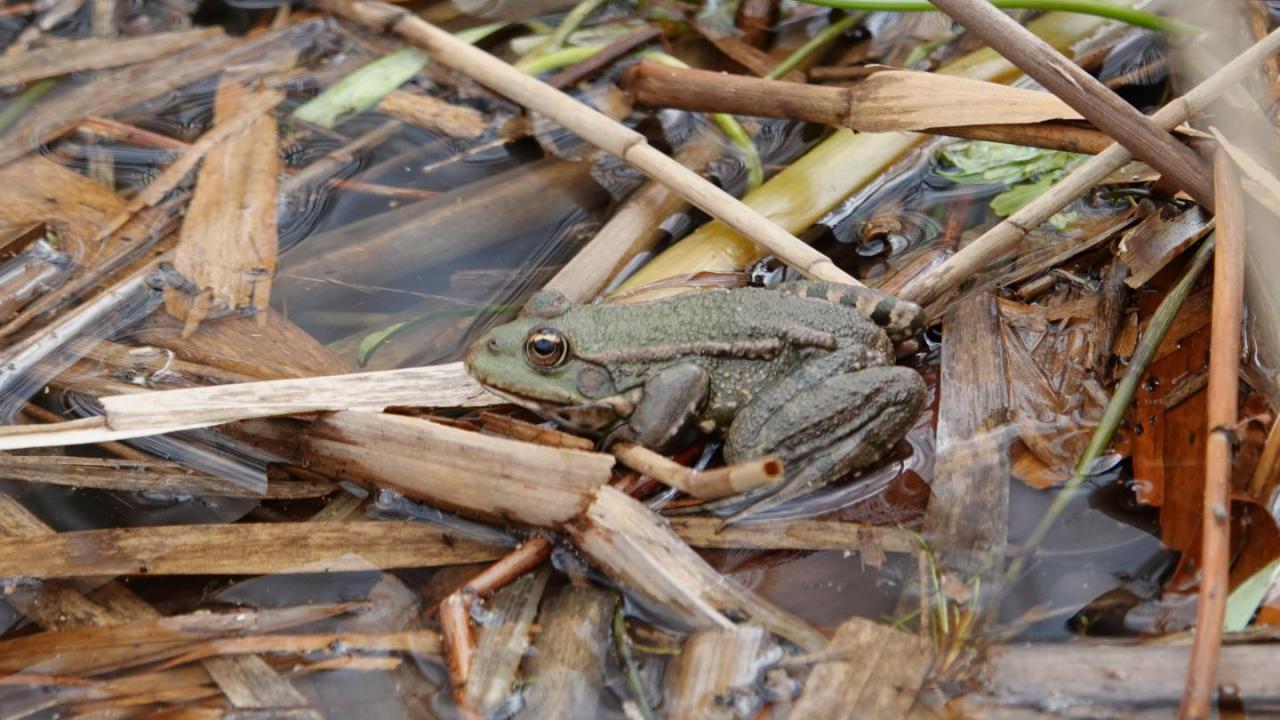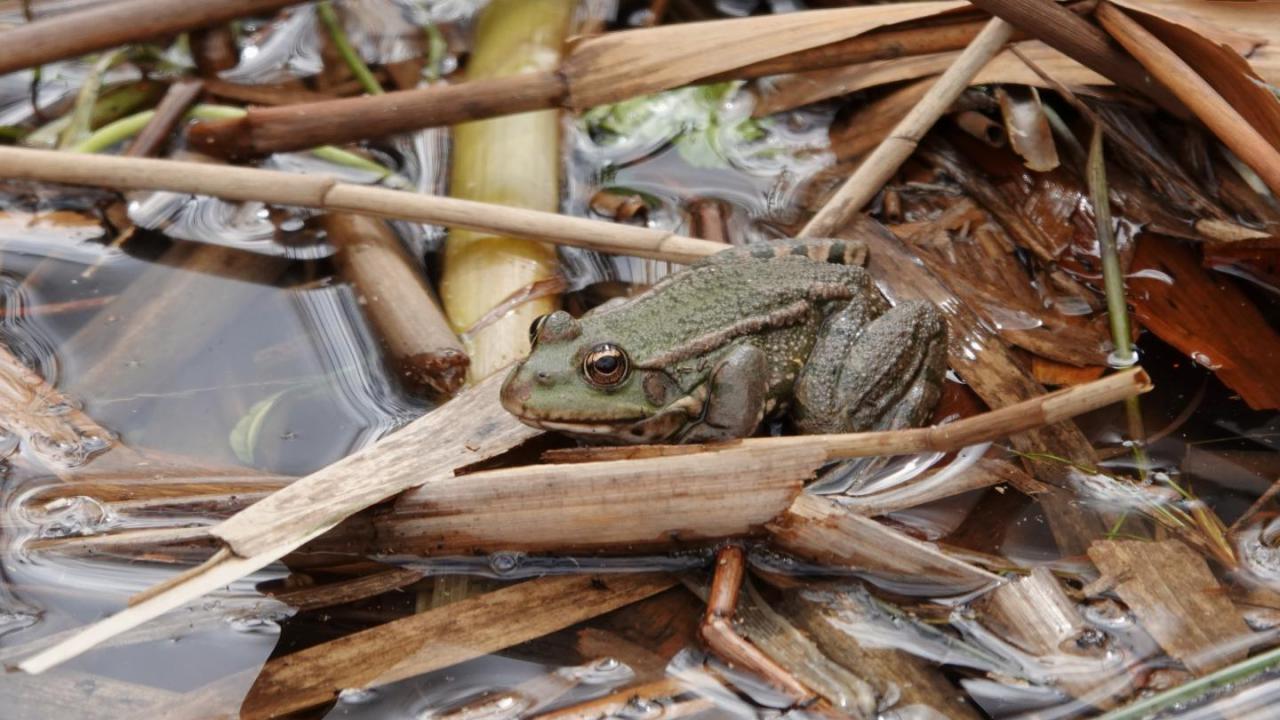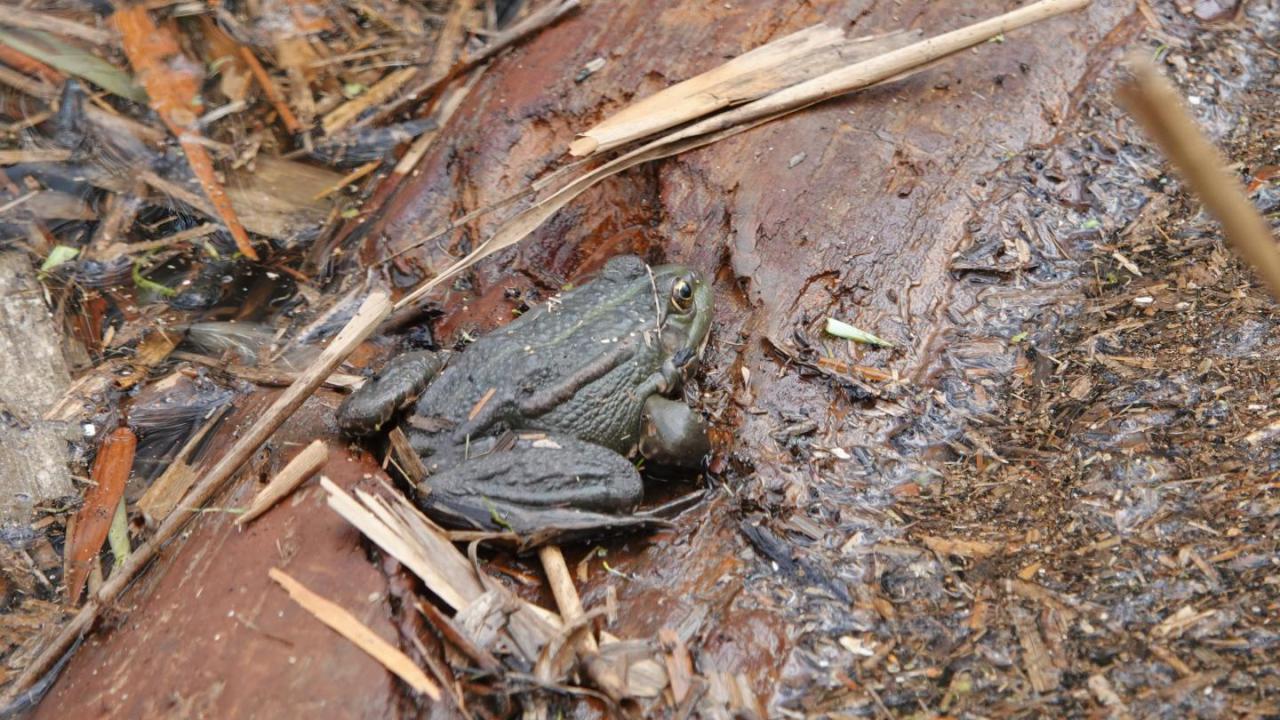Description:
The Marsh Frog (Pelophylax ridibundus) is the largest frog native to Europe and is very similar in appearance to the closely related Pool Frog (Pelophylax lessonae) and Edible Frog (Pelophylax klepton esculentus).
These three species, now again in the genus Pelophylax, are often referred to as "green" frogs or "water" frogs to distinguish them from the more terrestrial European Rana species, which are known as "brown" frogs or "grass" frogs.
The Pool Frog is the smallest of the three and the Marsh Frog is the biggest. The Pool Frog's body size is usually 5-8 cm, the Edible Frog's body size is usually 8-12 cm and the Marsh Frog can reach a maximum length of 17 cm.
Identification of the three species can be very difficult. Various characteristics need to be checked. The most important differences between the three species are:
1. Metatarsal tubercle.
This is a bulge found at the base of the shortest rear toe. The Pool Frog has the biggest metatarsal tubercle but its shape is symmetric (like a half circel or a half apple). The Marsh Frog has the smallest metatarsal tubercle and is asymmetric (the highest point pointing to the toe, like a half pear). The size of the Edible Frog's metatarsal tubercle is in between the other two and is also asymmetric (the highest point pointing to the toe, like a half pear).
2. Colour of the belly.
The Pool Frog's belly is white, the Edible Frog's belly is usually mottled with grey patches and the Marsh Frog's belly is dark with a black pattern.
3. Vocal sacs.
The vocal sacs of the Pool Frog are white, the vocal sacs of the Edible Frog are greyish and the vocal sacs of the Marsh Frog are dark grey or blackish.
Nature Reserve Het Vinne, Zoutleeuw, Belgium, 14 April 2023




